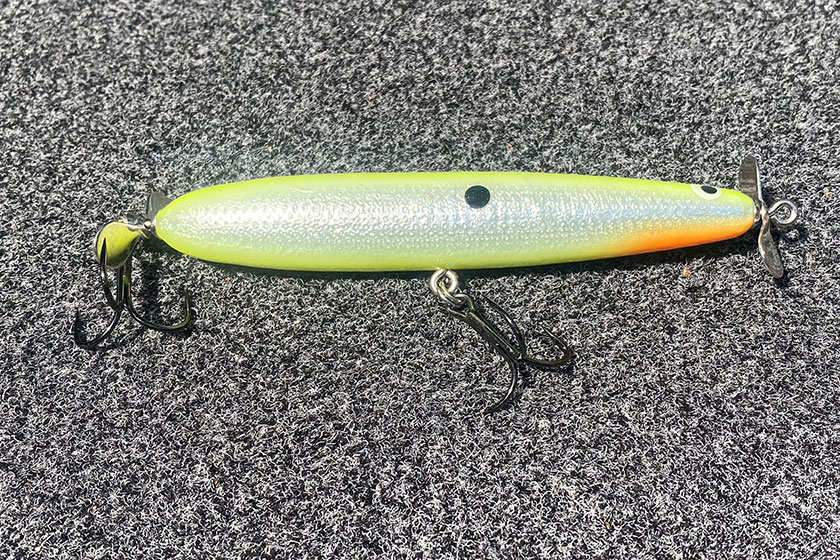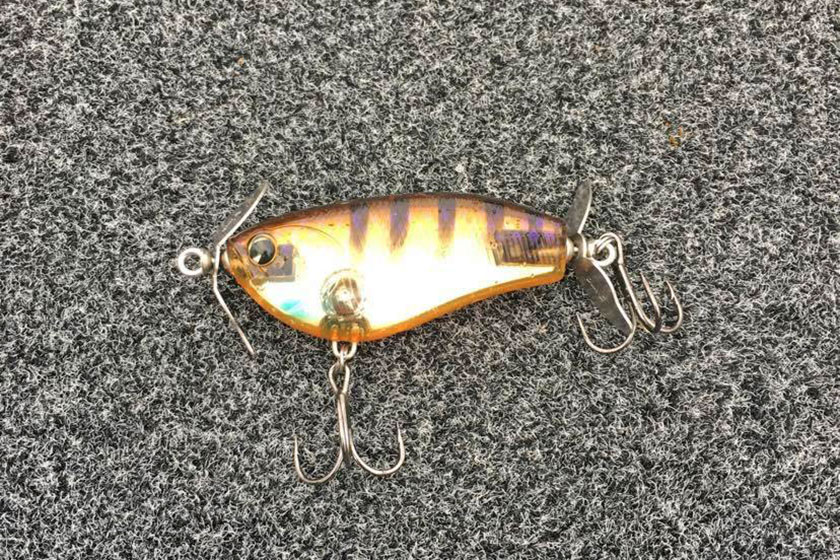
September 20, 2021By Justin Brouillard
A topwater bite is one of the best bites a bass angler will get. With a large explosion, aggressive bass will hit a surface lure with rage and often by surprise. When the bass focus in on baitfish, Paul Mueller will exploit a topwater presentation anytime there is a bass willing to bite. When guiding, or fishing the nation’s top tournament trail, there are several instances when a surface lure will produce key bites from big bass.
In this 5-Part Series, Bassmaster Elite Series Pro Paul Mueller takes us through the different types of topwater baits, when and where he employs them, why he chooses one over another, and his favorite gear for topwater success.
Prop-Style Bait
A prop bait, like the other styles has a niche. For Mueller, choosing a prop bait is based on how the fish are reacting. A popping bait is closely related to a prop bait, as the mood of the fish usually calls for one or the other.
“It’s totally trial and error over a popper. If I am throwing a popping bait, its mostly going to be that 8 a.m. to 9 a.m. window, the banks are shaded, fished around docks, or inside weed edges. It shines like a popper but totally depends on the mood of the bass.”
He believes there is something about each bait that triggers the bass, and you have to keep both on-hand until you can get dialed in on the specifics.
The other scenario that Mueller employs this presentation is when the bluegills are spawning. When a bass’ main forage is spawning, the fish let their guard down and bass know it. Big, lazy largemouth bass like an easy meal—and they know how and when to get it.
“I have seen a prop bait do magical things when they get on it and nobody else picks up on the bite,” he said. “Around the bluegill spawn, I like to find the honeycomb beds in one zone and then you have to figure out when to get to those areas and fish them.”
While early and later in the day may be optimal, there are times when the bass want to eat surface baits mid-day. Fishing in Arkansas on Lake Ouachita, Mueller dialed in a prop bait and has applied it back home on Candlewood Lake and uses it now, all around the country.
“It is a smaller window than some baits, but it has a place and it catches them extremely well.”
Baits
When prop baits come into play, he sticks to a finesse size and a larger size plug. The IMA Helips is the choice for a finesse/normal-size bait and since the main application is spawning bluegills, the several bluegill colors are the obvious choice.
“The Helips is a really good bait. It’s designed with two squeaky props, one in the front and one in the back. The churning will help draw the bluegill up to the bait and then the bass comes.”

ima-Helips
He starts with the smaller bait first and if the weather is stable or the bite is red hot, he’ll try a larger presentation to tempt bigger largemouth bass.
The larger bait is a PH Customs Old School Balsa Twin Spin. Larger than the Ima Helips, the Twin Spin is 4.5-inches long and creates a commotion on the surface with little effort. Made from jelutong wood, the 0.5-ounce plug features No. 2 VMC trebles, Mueller gets more casting distance with the heavier and larger bait while giving the fish a bigger meal.
“The bigger bait is strictly for largemouth while the smaller one I use more to target smallmouth as well. It excels in stained water and when the bass get on perch as well as the bluegills. Another scenario is on certain bodies of water where the fish are living shallow all year long, the prop-style baits, like a popping bait, will have a bigger window to be successful.”
Gear
Rods: Dobyns Fury 703C
Reel: Lew’s BB1 Pro 8.1:1
Line: 17- or 20-pound Gamma Poly Flex Copolymer
For both prop bait scenarios, Mueller goes with a Dobyns Fury 703C casting rod and once again, the high speed Lew’s BB1 Pro in the 8.1:1 ratio. The shorter 7-foot 703C is better working around cover while maintaining the power to fight big fish to the boat. The Gamma Poly Flex Copolymer in 17- or 20-pound gives him the strength to get bass out of cover.


